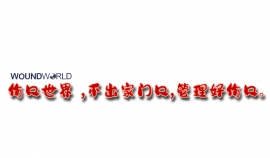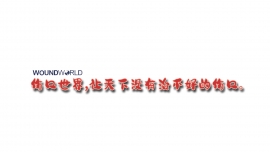文献精选
Carlos Lo´ pez-Otı ´n,1,2,3,* Maria A. Blasco,4 Linda Partridge,5,6 Manuel Serrano,7,8,9 and Guido Kroemer10,11,12,*
1Departamento de Bioquı´mica y Biologı´a Molecular, Instituto Universitario de Oncologı´a (IUOPA), Universidad de Oviedo, Oviedo, Spain
2Instituto de Investigacio ´ n Sanitaria del Principado de Asturias (ISPA), Oviedo, Spain
3Centro de Investigacio ´ n Biome ´ dica en Red de Ca ´ ncer (CIBERONC), Madrid, Spain
4Telomeres and Telomerase Group, Molecular Oncology Program, Spanish National Cancer Centre (CNIO), Madrid, Spain
5Department of Genetics, Evolution and Environment, Institute of Healthy Ageing, University College London, London, UK
6Max Planck Institute for Biology of Ageing, Cologne, Germany
7Institute for Research in Biomedicine (IRB Barcelona), Barcelona Institute of Science and Technology (BIST), Barcelona, Spain
8Catalan Institution for Research and Advanced Studies (ICREA), Barcelona, Spain
9Altos Labs, Cambridge, UK
10Centre de Recherche des Cordeliers, Equipe labellise´ e par la Ligue contre le cancer, Universite´ de Paris, Sorbonne Universite´ , INSERMU1138, Institut Universitaire de France, Paris, France
11Metabolomics and Cell Biology Platforms, Gustave Roussy, Villejuif, France
12Institut du Cancer Paris CARPEM, Department of Biology, Hoˆ pital Europe´ en Georges Pompidou, AP-HP, Paris, France *Correspondence: 该Email地址已收到反垃圾邮件插件保护。要显示它您需要在浏览器中启用JavaScript。 (C.L.-O.), 该Email地址已收到反垃圾邮件插件保护。要显示它您需要在浏览器中启用JavaScript。 (G.K.)
https://doi.org/10.1016/j.cell.2022.11.001
SUMMARY
Aging is driven by hallmarks fulfilling the following three premises: (1) their age-associated manifestation, (2) the acceleration of aging by experimentally accentuating them, and (3) the opportunity to decelerate, stop, or reverse aging by therapeutic interventions on them. We propose the following twelve hallmarks of aging: genomic instability, telomere attrition, epigenetic alterations, loss of proteostasis, disabled macroautoph:agy, deregulated nutrient-sensing, mitochondrial dysfunction, cellular senescence, stem cell exhaustion, altered intercellular communication, chronic inflammation, and dysbiosis. These hallmarks are interconnected among each other, as well as to the recently proposed hallmarks of health, which include organizational features of spatial compartmentalization, maintenance of homeostasis, and adequate responses to stress.
Harikrishna K. R. Nair Citation: Nair HKR (2024) Effectiveness of combination of silver gelling fibre with foam dressing in diabetic foot ulcer: a case series. The Diabetic Foot Journal 27(1): X-X
Key words
- Diabetes foot ulcer infection
- Silver gelling fibre
- Foam dressing
- Case series
Article points
1. Case series to demonstrate the effectiveness of silver gelling fibres in combination with foam dressing
2. Good healing rates were found with use of this combination
3. Infection prevention combined with exudate management were key benefits to this treatment regimen.
Authors
Harikrishna K. R. Nair is Professor and Head of the Wound Care Unit, Department of Internal Medicine, Kuala Lumpur Hospital, Malaysia
This case series demonstrates the effectiveness of using silver gelling fibres in combination with a foam dressing for the treatment of diabetic foot ulcers.
Sleep quantity, quality and timing are significantly associated with the development of type 2 diabetes and have an impact on glycaemic control and cardiovascular disease risk in those with established diabetes, according to this narrative review in Diabetes Care. The authors are concerned that, although clinicians commonly explore physical activity and diet with people at risk of or with type 2 diabetes, they are less likely to ask about sleep. They outline normal sleep structure, share four simple questions to elicit sleep status and summarise the data supporting the role of sleep within the “5S” framework of 24-hour movement (Sleeping, Sitting, Stepping, Sweating and Strengthening) included in the ADA/EASD consensus report on the management of hyperglycaemia in type 2 diabetes. They also share the evolving evidence base supporting the association between sleep and type 2 diabetes, describe how to assess sleep and manage sleep disorders, and advise on helping people set simple goals. It is hoped this will translate into more clinicians spending time discussing sleep in future.
Pam Brown GP in Swansea
Citation: Brown P (2024) Optimising sleep – simple questions and goals. Diabetes & Primary Care 26: 99–101
Intermittent fasting comprises a variety of dietary patterns in which eating and fasting are cycled over a regular period, with potential benefits in terms of body weight and metabolism. This factsheet covers the definitions, benefits and risks of intermittent fasting, and provides tips for supporting people who wish to adopt these patterns. Most research on intermittent fasting has been conducted in people with overweight or obesity, with or without diabetes. Many healthy-weight people are also interested in these diets; however, in this group, research shows minimal metabolic improvements and, concerningly, reductions in physical activity and lean body mass.1



